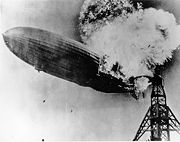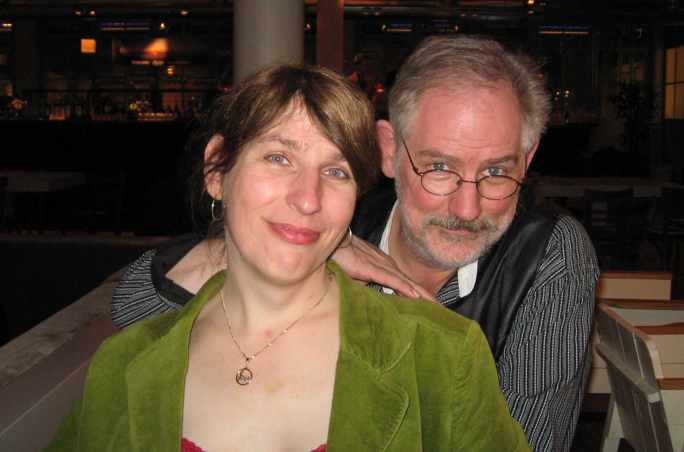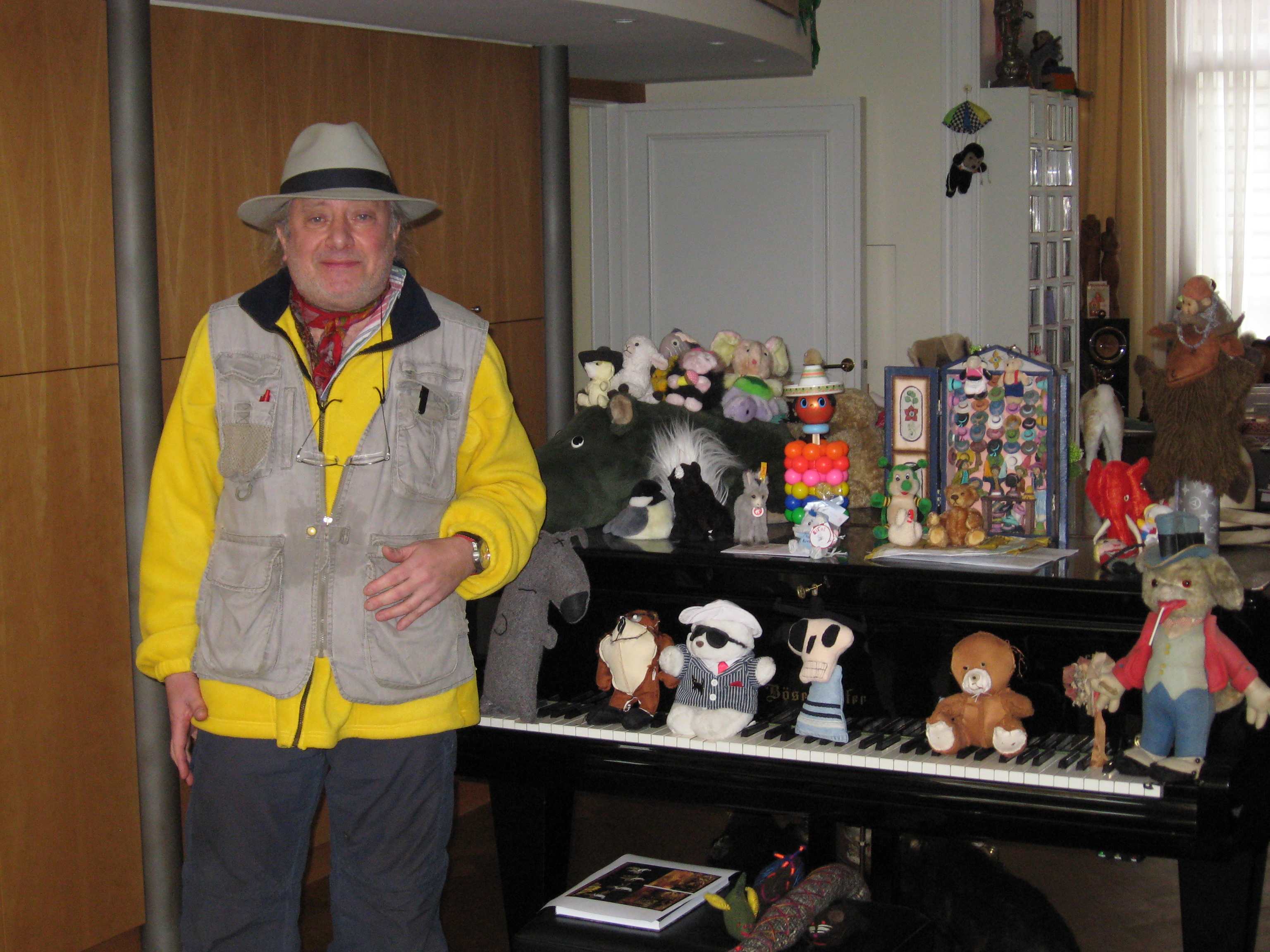PostClassic: November 2007 Archives
I was pleased, at my November 20 lecture at Goldsmiths College in southeast London, to meet fellow blogger Tim Rutherford-Johnson, in attendance. He says I met him at a Goldsmiths appearance several years ago, but I hadn't remembered him from that time because he hadn't yet become a famous new-music blogger - in fact, no one had yet heard the word "blog." Tim flatteringly describes my talk in his current blog entry, and makes cryptic reference to a little scheme that we whipped up over drinks afterward. We thought it might be fun to each separately report that a certain fellow blogger had shown up at my lecture roaring drunk. As so often, when the time came I didn't quite have the energy to go through with the practical joke, but Tim and I had fun developing the scenario.
In Amsterdam I also quite unexpectedly ran into an old friend: Frank Abbinanti, a pianist-composer from my Chicago days, who happened to give a performance at the Goethe Institute on October 21. Frank is a political composer from the Cardew circle whose tastes, which I know well, run from political music to the Darmstadt school to certain thorny edges of postminimalism. This was not our first chance encounter. One day in the late '80s I was browsing at Academy Books on 18th Street in Manhattan, a great place for used records. The store phone rang, and an employee picked it up. I heard his side of the conversation: "Yeah? Boulez Piano Sonatas? Who's the pianist again? Idil Biret? Hold on, I'll look it up." He set the phone down and walked off. With an undefinable feeling that only one person in the world could be calling New York to search for that particular disc (which I own, by the way), I sidled over to the phone, picked it up, and asked, "Frank?" It was him. Calling from Chicago.
I love, and by "love" I mean "am nearly made physically ill by," this paragraph that's been added to the Wikipedia entry on Downtown music:
The term "downtown music" can mean something entirely different, depending on the type of downtown a city has. For example, in a city with a very historic downtown, the associated music is generally popular music from the 1930s, 1940s, and 1950s charachterized [sic] by smooth vocals, prominent use of string instruments, and often a very important role for the background singers. In a more stereotypical "inner city" type of downtown, the term can refer to hip-hop and rap.
It's difficult to tell whether this is a put-on, or whether the guy thinks he's making an actual contribution. But hey, kids, Wikipedia is the new paradigm for knowledge! Get used to it!
UPDATE: Ah - the writer appears to have been banned from Wikipedia for adding nonsense to several sites, and subsequent to my posting, these lines were quickly removed. But, superficially plausible as they looked, on what authority could a knowledgeable expert have removed them himself?
OK, kiddies, gather around, it's time to reap the benefits of your uncle Kyle's globe-trotting. I'm back, having paid $50 US to carry an extra 10 kilos of new CDs onto the plane in my suitcase, not to mention the box of CDs that I paid good Euros to mail home from Dublin. I must now be considered southern Columbia County's leading expert on Dutch and Irish composers, and so I pass the expertise on to you via Postclassic Radio, which will be very heavy in Dutch and Irish music for awhile. Line up the bottles of Guinness and Hoegaarden, and be ready to mix.
First, music from The Netherlands. I had already put up several pieces by Dutch sampling champion Jacob Ter Veldhuis, who performs nonlocally as Jacob TV. (Good idea; one problem Dutch composers have getting exported is that their names often require diphthongs we Englishers just don't have on our tongues.) Now I've added several pieces by Peter Adriaansz, a composer of slow, sensuous drone music who's spent time in the States, and whose music sounds like a real Dutch-American hybrid. Particularly keep an ear out for his Prana, a 63-minute, glacially moving continuum that I enjoyed hearing live at the Bimhuis in Amsterdam. There are several pieces up by Anthony Fiumara, composer of nicely nonobvious process pieces, plus works played by the Orkest de Volharding, which Fiumara directs, composed by Geert van Keulen, Wim Laman, Paul Termos, and Willem van Manen.
Interspersed with this is a travelogue of Irish new music. Some of the liveliest pieces are by Donnacha Dennehy, the postminimalist who was my gracious host at Trinity College, and whom musicologist/raconteur Bob Gilmore has been describing to me as "THE best young composer in Europe." Well, I haven't heard every 30-something composer in Europe yet, so I defer to Bob for the time being. A more unexpected find, in-between new music and pop, was Roger Doyle, who, as virtuoso of the recording studio, appears to be kind of the Brian Eno/Harold Budd of Ireland. I've put up several virtual piano pieces from his disc Baby Grand, Satie-like in their humor, plus music from his five-CD set Babel. Gerald Barry is, of course, by all acclaim the leading Irishman of my generation, and I've posted a couple of quite listenable chamber works for your validation. And I let in one very knowledgeable young composer I met in England, Neil Campbell, whose Assembly and Mass are so relentless that the "post" in postminimalist begins to fade away.
The Netherlands has a national style, against which people like Peter Adriaansz and Renske Vrolijk can profitably rebel. The Irish seem to be all over the place, but I've got a couple more Irish complilation discs to make my way through, and the Irish Music Center was very helpful. But along with Serbian music by Vladimir Tosic, Postclassical Radio has taken on an international cast, and it's all guaranteed postclassical.
 LONDON - I've heard a lot of music in Europe, but the concert I was most excited about, that I'd planned on hearing months in advance, was the premiere of my Dutch composer friend Renske Vrolijk's Charlie Charlie. To hear it, in fact, I had to leave England between lectures and fly, then train it, back to Den Bosch in The Netherlands (a town whose more official name is S' Hertogenbosch, and no one was quite able to explain why it has two names). Let it be some small window into the logistics of my journey that it was cheaper for me to fly back to Amsterdam and stay in a hotel there than it was to continue staying in my hotel in London. Mention London to anyone on the Continent, and they roll their eyes at the expense. I will too.
LONDON - I've heard a lot of music in Europe, but the concert I was most excited about, that I'd planned on hearing months in advance, was the premiere of my Dutch composer friend Renske Vrolijk's Charlie Charlie. To hear it, in fact, I had to leave England between lectures and fly, then train it, back to Den Bosch in The Netherlands (a town whose more official name is S' Hertogenbosch, and no one was quite able to explain why it has two names). Let it be some small window into the logistics of my journey that it was cheaper for me to fly back to Amsterdam and stay in a hotel there than it was to continue staying in my hotel in London. Mention London to anyone on the Continent, and they roll their eyes at the expense. I will too.
In any case, Charlie Charlie is a 65-minute... opera? cantata? oratorio?... about the wreck of the Hindenburg in 1937. The premiere took place at the Verkadefabriek, one of those wonderful European new-music spaces that's a converted something-or-other with its own restaurant and a great place to hang out for hours following a premiere; performances in other cities run through December 1. Renske is an aviation nut who flies gliders as a hobby, and last spring in the U.S. she actually got permission to tour the military installation at Lakehurst, New Jersey, that now sits where the Hindenburg came down in flames. Charlie Charlie is what she calls a "documentary in music," and portrays the event with an enlightening wealth of detail.
The Hindenburg was, of course, one of history's best-photographed disasters, and Charlie Charlie's accompanying video by Bart Visser contains amazing footage of people running in horror from the descending firebomb. Between the historical film footage and suavely postminimalist, often almost meditative music, Renske mediated by a series of steps involving sampled vinyl noise (which gave a grainy historical feel even to the live music played in front of us), historical recordings (including a post-disaster conversation between Hermann Göring and the Hindenburg's captain, who survived), and contemporary accounts of and letters about the event whose phrases were posted visually, played as samples, and sung live. In short, the most notable aspect of Renske's strategy was her closely-woven integration of visual, audio, and performance elements so that ideas and phrases flowly smoothly among all dimensions of the production. In Lex Bohlmeijer's libretto of historical texts, phrases returned again and again at various lengths, creating both musical cohesion and a poignant atmosphere of mourning:
for you would have felt nothing
you would have felt nothing...
everything would have been tranquil and peaceful...
you would have expressed only one regret[:]
the voyage is over so soon.
The example is suggestive of Renske's meditative response to such a violent tragedy, though there were also climactic passages of pounding percussion. Still, seamless musicality is one of Renske's signal traits as a composer. The Dutch have their own national post-Andriessen postminimalist style which is quite impressively widespread (and of which more later), but it's a hard-edged style grounded in continual Stravinskian rhythmic surprise. Renske's idiom is less macho and more affecting: her ostinatos less jumpy, her melodies smoother and quite suited for theatrical singing. She told me later about historical references in the music - like "Brother, Can You Spare a Dime?" played slowly in the background - that I'll have to listen for on recording. It's a beautiful, well-shaped work, and as soon as I get a copy, you'll hear it on Postclassic Radio. Meanwhile, here I congratulate the composer after the premiere:

I have two more lectures, at Goldsmiths College on Tuesday and York College on Thursday, and I return to the U.S. Friday.
[Update below]

DUBLIN - One of the best things I've done in Europe was spend 25 bracing hours with one of my composer heroes, Charlemagne Palestine. I'm astonished to have had the opportunity. I had heard stories of Palestine from the early '70s on, but never heard a note until 1994, when his old Shandar vinyl disc Strumming Music was finally released on CD. I had come to figure that he was a legend whose music was lost to history, but since 1994 more than a dozen Palestine recordings have appeared, some of them old archival recordings, others documenting brilliant new work. He says now that he gave up music in the '80s because the categories of that conservative era left no place for his music, but he's never quit making art and film. I had had lunch with him years ago in New York, and finally got to hear him perform in 2000, but it was even more amazing to see him at his home in Brussels - a truly wonderful, livable, charming city - and to be treated by him to an incredibly hospitable tour.
Endlessly energetic and endearingly immodest, Charlemagne is a wealth of hysterical stories, all of which will have to appear in a book about him someday. For now, one that relates to my life will suffice. In 1969, Charlemagne recalled, someone asked Morton Feldman at a public interview whether his music was part of the "Downtown style." "What Downtown style?," Feldman answered dismissively. "I don't know anything about any Downtown style."
Well, Charlemagne was outraged. (Keep in mind that at this point he was 22 and Feldman was 43.) He went home and wrote Feldman a hilariously obscene letter which I won't try to replicate here, because it wouldn't be nearly as funny as hearing him tell it with appropriate hand gestures, but it had to do with where Feldman could stick something. And Charlemagne ended by signing it, "The Downtown community."
In 1969 as this happened, I was an awkward 13-year-old kid at T.W. Browne Junior High School in Dallas. So for those of you who think that Downtown music was my invention (as has been publicly asserted more than once), or, even worse, a figment of my imagination, there you have vivid evidence of the Downtown scene, and its aggressive self-assessment, in 1969. I first heard about Uptown and Down ten years later, in 1979, when my teacher Peter Gena returned from the New Music New York festival. Then in 1986, as Village Voice critic, I inherited the Downtown scene that Tom Johnson had long been covering - I did not will it into existence through my verbal magic.
After that letter, Feldman could never bring himself to speak civilly to Charlemagne, which the latter sees as a major failing - if Feldman had had the same real kind of Brooklyn Jewish sense of humor as Charlemagne, he says, he would have just laughed it off. (The impressive number of important people Charlemagne has alienated makes me feel like a rank amateur in the provocation department.) Nevertheless, around 1969, Charlemagne and La Monte Young and Terry Riley and some other Downtowners were starting to give performances four, five, six hours long, and Charlemagne - who is a tremendous fan of Feldman's late music - is convinced that by drawing Feldman's attention to what was going on Downtown, he helped inspire Feldman's ambition to write longer and longer pieces. So if anyone wants to partly credit Charlemagne's scabrously funny letter with having contributed to one of the great repertoires of late-20th-century music - well, suffice it to say he won't mind.
UPDATE: Another of Charlemagne's alienation stories is a little more heart-warming. He and James Tenney didn't speak for 30 years. What happened was, in the interview with Walter Zimmermann for Desert Plants, Zimmerman mentioned Tenney, and Charlemagne responded, "He's the Mendelssohn of new music!" What Charlemagne was thinking, he says, was that Mendelssohn was a central figure of Romanticism who did a lot for other composers, and he was trying to say that Tenney held that same position. But apparently Tenney had such a low opinion of Mendelssohn's music that he was terribly offended, and thought Charlemagne was calling his music facile and superficial. In any case, months before Tenney died the two of them were invited to a dinner party together and humorously made up. Aren't you glad?
DUBLIN - Henry David Thoreau's wonderful dictum:
My life has been the poem I would have writ,
But I could not both live and utter it.
will have to be modernized:
My life has been the blog I would have writ,
But I could not both live and update it.
I've been living rather than blogging, but I can pause long enough to announce that I will be performing Custer and Sitting Bull - perhaps for the last time ever, if I have anything to say about it - tomorrow night at 8 in the Printing Room at Trinity College in Dublin. Ireland. Along with a couple of other out-of-tune pieces.
Thanks to those who've been waiting desperately for audio documentation of my piano concerto Sunken City. I'm still waiting for the same thing, and as soon as I have it, you'll have it.
Now to go check out Irish sushi. Who knew?
Sites To See
AJ Blogs
AJBlogCentral | rssculture
Terry Teachout on the arts in New York City
Andrew Taylor on the business of arts & culture
rock culture approximately
Laura Collins-Hughes on arts, culture and coverage
Richard Kessler on arts education
Douglas McLennan's blog
Dalouge Smith advocates for the Arts
Art from the American Outback
Chloe Veltman on how culture will save the world
For immediate release: the arts are marketable
No genre is the new genre
David Jays on theatre and dance
Paul Levy measures the Angles
Judith H. Dobrzynski on Culture
John Rockwell on the arts
innovations and impediments in not-for-profit arts
Jan Herman - arts, media & culture with 'tude
dance
Apollinaire Scherr talks about dance
Tobi Tobias on dance et al...
jazz
Howard Mandel's freelance Urban Improvisation
Focus on New Orleans. Jazz and Other Sounds
Doug Ramsey on Jazz and other matters...
media
Jeff Weinstein's Cultural Mixology
Martha Bayles on Film...
classical music
Fresh ideas on building arts communities
Greg Sandow performs a book-in-progress
Harvey Sachs on music, and various digressions
Bruce Brubaker on all things Piano
Kyle Gann on music after the fact
Greg Sandow on the future of Classical Music
Norman Lebrecht on Shifting Sound Worlds
Joe Horowitz on music
publishing
Jerome Weeks on Books
Scott McLemee on books, ideas & trash-culture ephemera
theatre
Wendy Rosenfield: covering drama, onstage and off
visual
Public Art, Public Space
Regina Hackett takes her Art To Go
John Perreault's art diary
Lee Rosenbaum's Cultural Commentary
